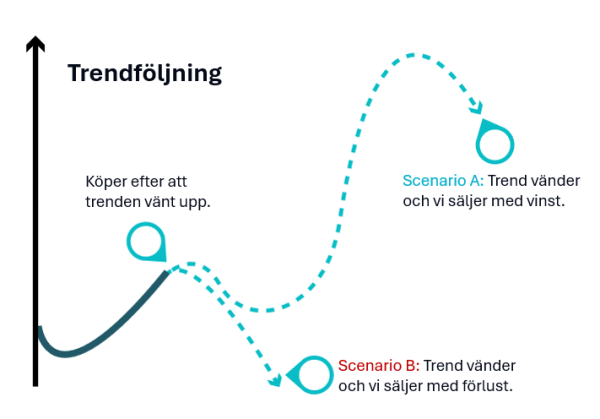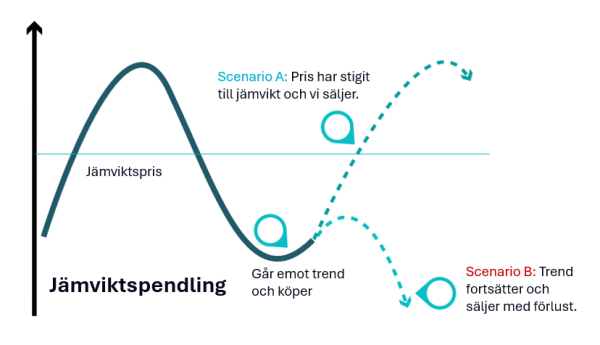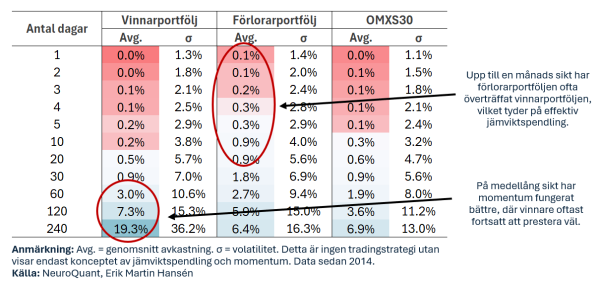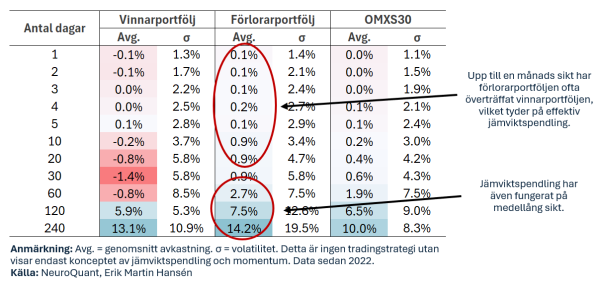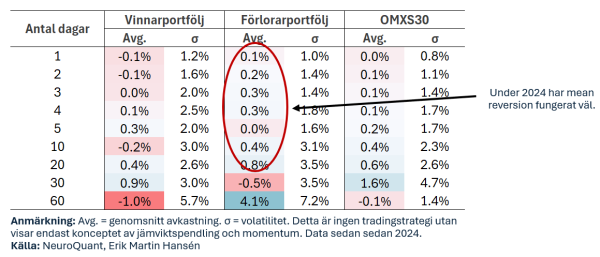Trend-following vs. Mean reversion: Which strategy dominates and why?
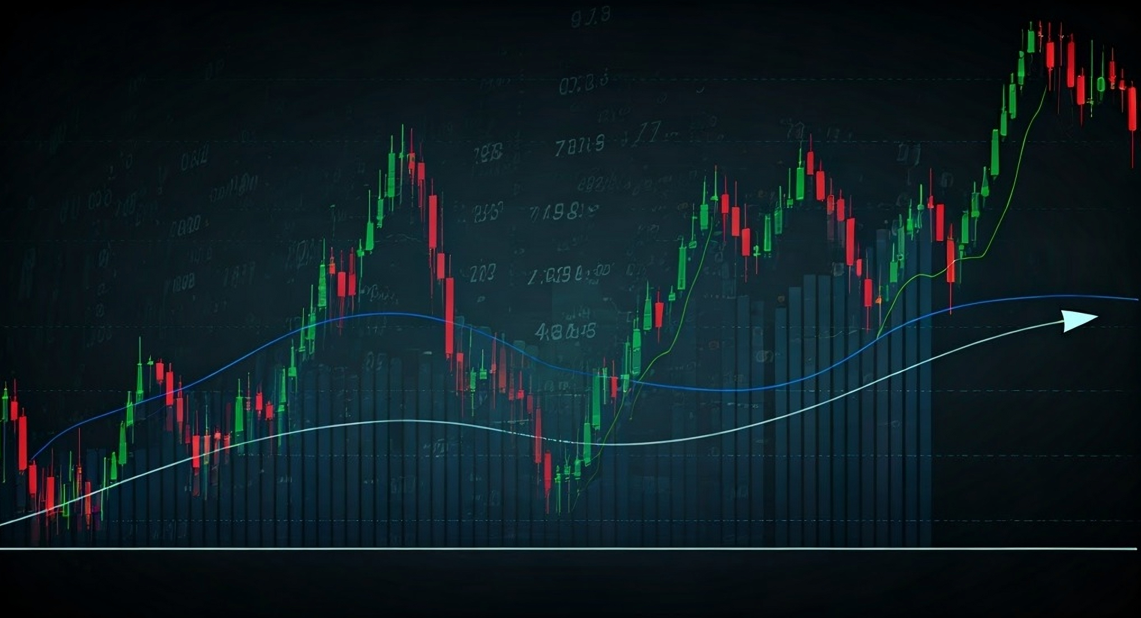
Investors’ fascination with market movements has led to two popular strategies: trend following and mean reversion. But market dynamics are never constant, and what works well one year can flop the next. Since 2022, we have seen an unusual pattern where mean reversion works not only in the short term – where it has traditionally dominated – but also in the medium term. What is behind this development?
Two strategies, two worlds
Trend following
Trend following is based on a simple concept: “Buy high and sell higher.” The goal is to follow the momentum of strong trends and avoid going against the direction of the market. The strategy tends to work well over medium to long time frames, especially when the market is in a stable uptrend or downtrend.
Equilibrium oscillation (mean reversion)
This strategy is based on the idea that the market often overreacts. After a rapid rise or fall, the price tends to return to its average. Mean reversion works best in the short term, where small inefficiencies can be exploited, but also in the long term, where undervalued stocks tend to appreciate in value.
What does history tell us?
The last 10-20 years have shown clear patterns:
- Short term (days to weeks): Equilibrium swings have been bread and butter, with traders buying at oversold levels and selling after rebounds.
- Medium term (months): Trend following has dominated, thanks to its ability to capitalize on long-term market trends.
The table below shows a simulation of two different portfolios where we include five stocks in each portfolio. We select companies from the OMX All-Share Index. The number of days refers to the lookback period and the number of days before exit. The winning portfolio consists of the five stocks that have performed best during the last x-day period, while the losing portfolio contains the five stocks that have performed worst during the same period.
The results in the table show that stocks tend to oscillate in the short term, up to about 30 days. This means that the portfolio with weak stocks generally outperformed the portfolio with strong stocks over these time frames. After 30 days, however, the momentum effect begins to take over, meaning that the winning portfolio outperforms the losing portfolio.
It is important to note that this is not a complete trading strategy but an illustration of basic concepts: equilibrium oscillation and momentum.
2022-2024: A new era for mean reversion?
Since 2022, mean reversion has performed exceptionally well, not only in the short term but also in the medium term. For investors and traders who have traded trend and momentum, it has been a challenging period.
The table below shows that the loser portfolio has also performed well in the medium term with data from 2022. It is no surprise to knowledgeable market participants that equilibrium oscillation has worked well in the short term, as this is the norm. For those who trade only momentum and trend-following strategies, it may have been a reminder of the importance of diversifying both strategies and time horizons. All strategies go through periods of weak performance.
What has changed in recent years and how should we act?
- Increased volatility
Geopolitical tensions, rising interest rates and uncertainty around inflation have created more sharp market movements, benefiting strategies that look for overreactions. - Macro factors
Central bank tightening has changed market dynamics. Previous trends driven by cheap liquidity have been replaced by faster swings between optimism and pessimism. - Institutional behavior
Large players, such as hedge funds and pension funds, tend to reposition themselves more quickly, creating more opportunities for mean reversion strategies to exploit short-term inefficiencies. - The role of technology
Quantum strategies and high-frequency trading have made the market more sensitive to small movements, amplifying the mean reversion effect.
What has it looked like in 2024?
In 2024, it will be a little more random with a lower period for lookback and exit, but we see that equilibrium commuting has worked quite well in the short term.
What does this mean for you as an investor?
This development does not mean that trend following is dead – far from it. But it is a reminder that the market is dynamic, and that strategies that have worked in the past must be adapted to new conditions.
When should you use which strategy?
- Short term: Focus on mean reversion in markets that are volatile, but not trending clearly.
- Medium term: Trend following can still yield good results, but it is important to be selective and adapt to market conditions.
Summary
The nature of the market is constantly changing, which means that we as investors must do the same. The recent success of equilibrium swings in both the short and medium term is a reminder of the importance of being flexible and diversified in our strategies. Investing and trading does not have to be like religion, politics or sports where you have to choose sides. It is perfectly possible to be a convinced trend follower and at the same time diversify your portfolio with equilibrium swing strategies. On the platform, we of course have signals and strategies for both trend and equilibrium swings.
